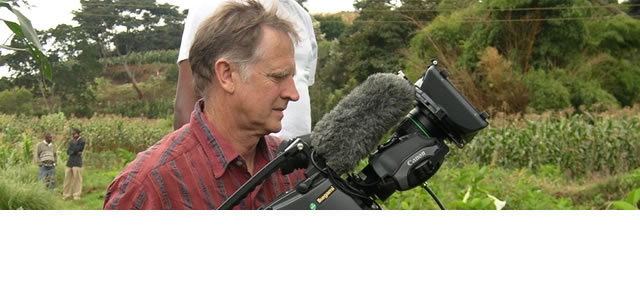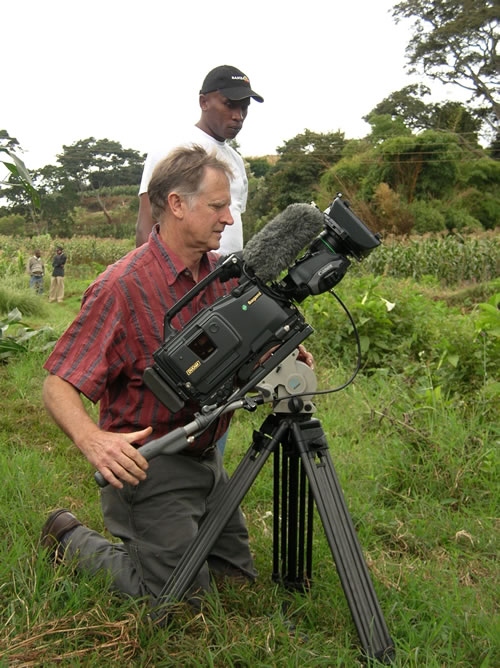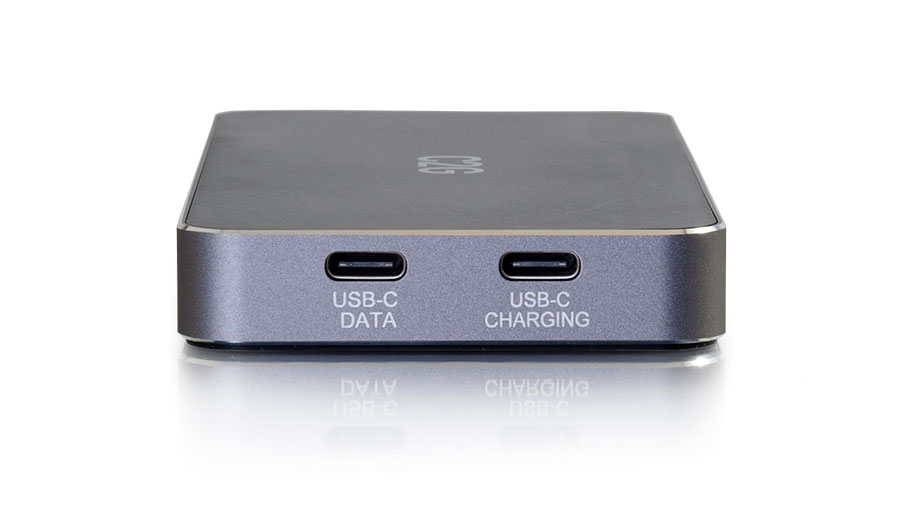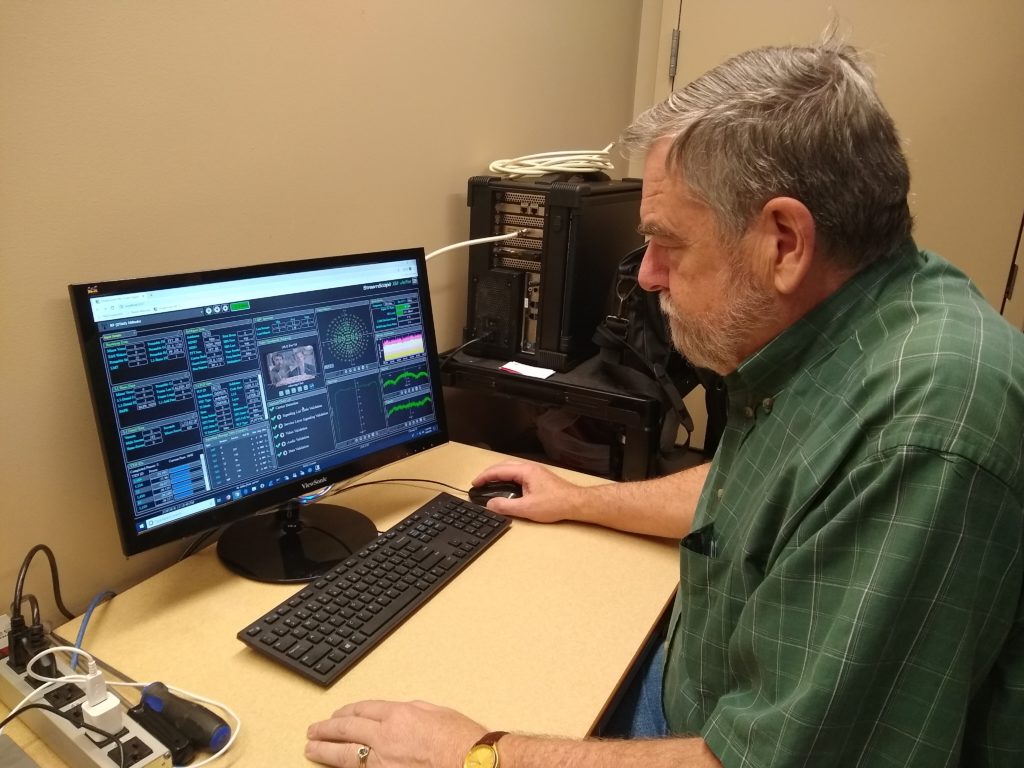Documentary filmmaker Alan Dater and partner Lisa Merton concentrate on the arts, education and social issues. One of Dater’s latest passions, Taking Root: The Vision of Wangari Maathai, which has garnered numerous awards and has been broadcast on PBS’ “Independent Lens” series, was one of his most challenging. “It was made far easier, thanks to support from my trusty 20-year-old Vinten Vision 10,” he says.
“While shooting in Kenya, I not only had to deal with plenty of dust, so much so, that at times we could not see the road in front of our van, but also when it rained, we had to deal with the amazing Kenyan red mud,” he recalls. “This stuff will suck your shoe off in a second. It sticks to everything. Imagine, as you walk, the soles of your shoes gain in height as the mud builds up. Yet, the Vinten equipment never failed us. All I had to do was wash down the tripod at the end of every shooting day.”
Dater often works single-handed and needs a tripod that he can throw over his shoulder while carrying a camera in his other hand. “Prior to getting my Vinten, I had been using a tripod and head that were simply too heavy, he recalls. “When I first bought the Vision 10 in 1992, I was shooting with a Sony Betacam. The Vision 10 head and the two-stage legs were perfect. I felt liberated. The legs were light and would collapse to a low angle, and were also very stable fully extended. The head is amazing. It allowed me to get smooth shots even when shooting full telephoto.
“I bought the mid-level spreaders for the legs as soon as they were available,”he adds. “And I often use my tripod on a Vinten dolly for simple dolly shots on smooth floors.
“As a cameraman, my equipment has to be completely dependable and its use becomes second nature to me,” he continues. “I want it to work seamlessly so that I can concentrate on getting the shot, and responding to the action that is before me. Obviously, taking good care of equipment is important. I often do not let other people carry my sticks unless I have trained them. I am not a nitpicky camera guy, but I do go out of my way to make sure my equipment will always be ready to work.
“The initial cost of my Vinten Vision 10 was a significant investment but it has paid off many times over,” he adds. “I’ve used this system while filming assignments all over the world — on top of mountains, in waist-deep streams, on dusty African locations, in a gritty pottery studio in Japan, in deep mud in Kenya, and at hundreds of other locations in the US and Europe. It’s just as smooth and precise today as the day I bought it. I have never had to have it repaired or serviced. It has outlived many different cameras: Hitachi FP-Z31, Aaton XTR Prod, Sony BVW-300A Betacam, and Ikegami HL-DV7W. I am now using it with my current HD camera, a Panasonic AG-HPX370. I just can’t tell you how much I have depended on it, and how much I appreciate the workmanship and durability that Vinten builds into their equipment.”
The Vision 10 has been so successful for operators like Dater, that its successor, the Vision 10AS, is popular for use in a wide variety of productions, from documentary shoots to breaking news coverage. The Vision 10AS can be configured to support a wide range of camera weights from 14.3 to 37.5 lbs. (6.5 to 17kg). With features such as the Side Load System, illuminated leveling bubble and Perfect Balance, this system is ready for rapid set-up in all situations.
Over the years, Alan Dater and partner Lisa Merton’s Vermont-based Marlboro Productions, have put the Vinten Vision 10 to the test for much talked about productions such as: Home To Tibet, Bridge of Fire, The World in Claire’s
Classroom, and Taking Root: The Vision of Wangari Maathai (which can be found at www.takingrootfilm.com).
Resources:





